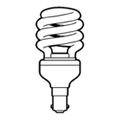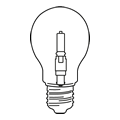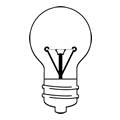05 Mar Test
Many of us take for granted the artificial light we use in our daily lives, but how many of us watch the sunrise or sunset each day? Sunrise and sunset have a distinct red/orange tinge of colour, while the midday sun will have more of a blue colour. This form of full spectrum lighting ensures a harmonious balance that helps manage our circadian rhythm, but when you use your smart TV, smartphone and tablets first thing in the morning, you are effectively telling your body that it’s midday, thus confusing your circadian rhythm. When used at night, it suppresses your melatonin (sleep hormone). The net effect of this is reduced sleep quality, tiredness and a downstream cascading flow of negative biological outcomes.
With energy efficiency a top priority these days, many of us are turning to the newer generation of LED lighting from indoor light, hydroponic farming, TV, smartphone, tablets, fridge lighting and even automobile headlights. The popularity of LED lighting has increased with a 30% year on year growth with predicted saturation of 75% across all lighting areas by 2020 (Goldman Sachs International, 2016; WikiPedia, 2018). It has penetrated every part of our lives in multiple ways, even to a point where it is carried in our pockets and bags on a daily basis (in the form of a smartphone).
| Type of Light Bulb | Photo | Description |
| Incandescent lamps |  |
These types of bulbs have been used for over 100 years, however the Australian government has been slowly phasing them out since 2009 (Energy Rating, 2018). |
| Halogen lamps |  |
These bulbs are more efficient at generating the same amount of light with less power used. |
| CFL (compact fluorescent light) |  |
CFL bulbs are more energy efficient and produce less heat, however they are hazardous if broken, due to the mercury content of the bulb. |
| LED & Smart LED |  |
LED bulbs were invented in the early 1900’s and subsequently produced in 1962, and as technology has advanced, the cost to produce has also decreased. |
The problem with LED lighting is the very large amount of blue light emitted and very little red light. The way energy efficiency is achieved in LED lighting is in the way it strips out the heat (infrared). Blue light has been scientifically identified as a potential hazard that has various side effects from:
- Supresses the release of your sleep hormone (melatonin), which further prevents the onset of sleep
- affects your circadian rhythm
- impacts the regeneration of your cells in your eyes
- may contribute to age-related macular degeneration

(Tosini, Ferguson and Tsubota, 2016)
To take a precautionary approach to such blue light hazards, there are a number of actionable steps that can be taken to minimize any health impact.
- Avoid using your smartphone, watching TV or using a digital device at least an hour before bed. Enjoy the sunrise instead.
- Replace your CFL and LED lights with incandescent light such as the OLED battery operated candle light from IKEA.
- Use blue-light blocking glasses. They are amber/orange spectacles that eliminate all blue colours in your vision. Cover your skin as well, since it is the largest organ of your body and also responds to light.
References
Energy Rating (2018) Step 1: Choose which type of bulb | Energy Rating. Available at: http://www.energyrating.gov.au/lighting/types-of-light-bulbs (Accessed: 27 November 2018).
Goldman Sachs International (2016) Technology in the Driver’s Seat THE LOW CARBON ECONOMY EXCERPTED FROM THE ORIGINAL: See inside cover for details. Available at: www.gs.com/research/hedge.html. (Accessed: 19 October 2018).
Tosini, G., Ferguson, I. and Tsubota, K. (2016) ‘Effects of blue light on the circadian system and eye physiology.’, Molecular vision. Emory University, 22, pp. 61–72. Available at: http://www.ncbi.nlm.nih.gov/pubmed/26900325 (Accessed: 27 November 2018).
Wikimedia Commons (2014) File:Leds sodium spectrum fr.jpg. doi: 10.1890/14-0468.1.
WikiPedia (2018) Light-Emitting-Diode. Available at: https://en.wikipedia.org/wiki/Light-emitting_diode (Accessed: 27 November 2018).NOTE: All graphical images are licensed under the Creative Commons 3.0 Licence.
